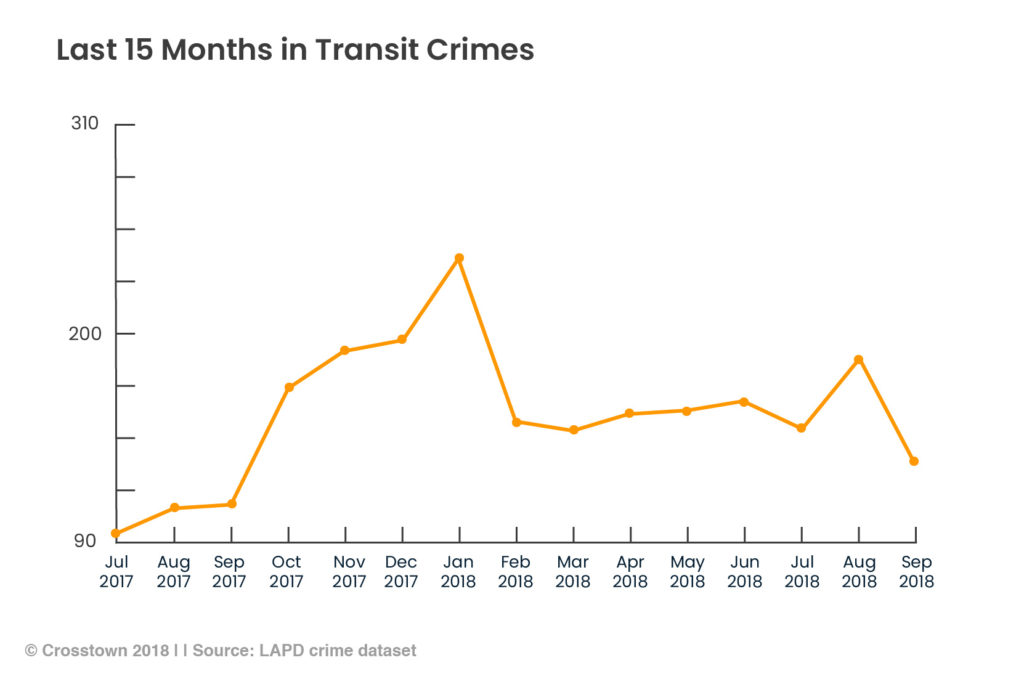Are police on the Metro effective?
Crimes reported on buses and trains in the city of Los Angeles have been increasing since the Los Angeles Police Department (LAPD) started counting them in July 2017.
It is the first time in 14 years that LAPD officers have been stationed aboard public transit in the city. Previously, policing for trains and buses in Los Angeles County was carried out by the LA County Sheriff’s Department (LASD). Because the LASD reported transit crime statistics for the entire county and the new data captured by the LAPD only covers the city, we cannot directly compare the data from prior to July 2017 with the post-July 2017 data. However for the past 15 months, the presence of police on trains and buses does not seem to have reduced crime on public transit in the City of LA.

In early 2017, the Los Angeles County Metropolitan Transportation Authority (Metro) Board approved funding to allocate $369.3 million dollars to the LAPD over a five year period in order to increase the presence of officers on trains and buses. The Los Angeles County Sheriff’s Department and the Long Beach Police Department also received funding to grow police presence on transit within their own jurisdictions.
A key goal of the increased presence was to speed up response time for crimes committed on public transit and to create a more comfortable environment for all metro users, said LAPD Deputy Chief Phillip Tingirides, who commands Transit Bureau Services.
Despite the rise in crime reports since the initiative began, including a spike in January 2018, Tingirides said it’s still too early to assess what impact the officers’ presences have had on transit crime rates.
“We won’t really be able to tell whether we’ve legitimately increased or decreased crime until the first of the year,” he said.
Police reports are the most effective way to determine the improvements in crime on trains and buses in LA, Tingirides said, but there’s a learning curve for stations to input the new data.
The top crime reported to officers since July 2017 on LA Metro lines is “battery – simple assault.” Cell-phone snatching is also a huge issue, Tingirides said.

Tingirides said he has received positive feedback from passengers who feel more safe when they see the presence of police, who also work to enforce the Metro Customer Code of Conduct.
We’ll be checking back in on transit crime in January to look at the trends for a year and a half of transit patrolling by the LAPD.
Have you been the victim of a crime on public transit? We want to record qualitative data too.
Call (918) 268-9168 and leave a detailed message of your experience with crime on public transportation in Los Angeles. Please also leave your contact information. With your consent, the story could be featured in future Crosstown content.






